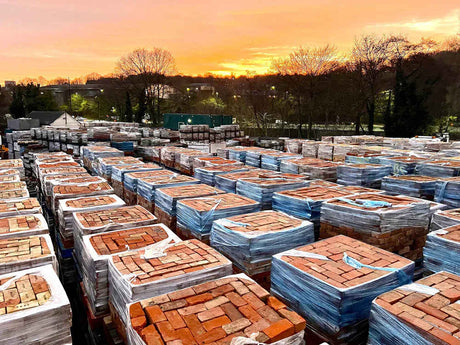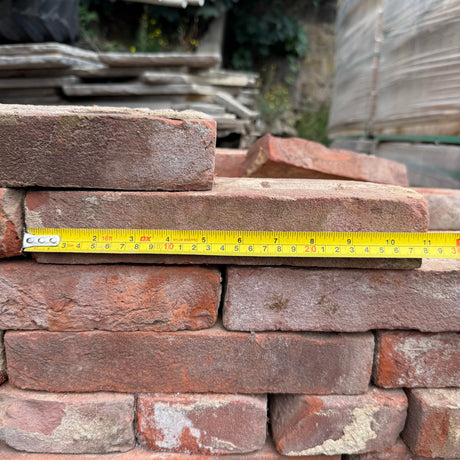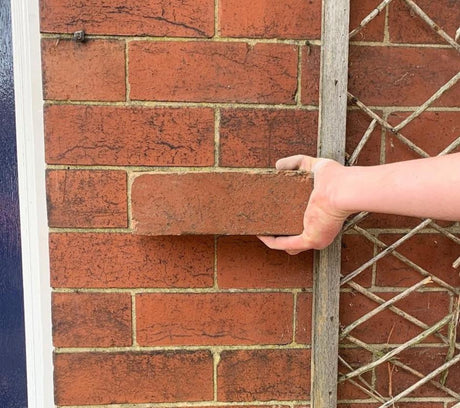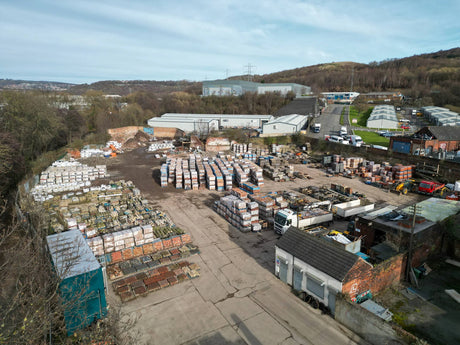How to Build a House with Reclaimed Bricks: A Guide
Are you planning to build your dream house? Want to do it in an eco-friendly way? It's time to consider using reclaimed bricks. Not only are they environmentally responsible, but they also add character and history to your home. But before you start sourcing for reclaimed bricks, there are some things you need to know. In this guide, we'll take you through the process of homebuilding with reclaimed bricks. We'll cover everything from assessing the suitability of reclaimed bricks for your project, sourcing them, cost considerations, navigating insurance and safety concerns, and what to do if you can't find matching reclaimed bricks. By the end of this guide, you will be able to make an informed decision about using reclaimed bricks and build a beautiful and sustainable home for yourself.

Assessing the Suitability of Reclaimed Bricks for Your Project
When considering reclaimed bricks for your project, it's essential to recognise their unique characteristics. The natural patina of reclaimed bricks makes them ideal for interior feature walls, adding charm and character to both new builds and existing properties. Additionally, these bricks, usually rescued from local demolition sites, are well-suited for conservation areas and period properties, contributing to sustainability by reducing wastage in the construction industry. Considering factors such as compressive strength, water absorption, and frost resistance will ensure their suitability for your specific project.
Advantages of Using Reclaimed Bricks
Reclaimed bricks offer an extensive variety of authentic colours and blends, perfect for lending a unique, old-world aesthetic to sensitive contexts. Their use reduces the carbon footprint of building projects and helps in preserving local architectural history. Additionally, they are cost-effective, minimising labour and material costs. Incorporating reclaimed bricks is a sustainable choice that adds character and charm to new build projects across the UK.
Potential Challenges with Reclaimed Bricks
When considering reclaimed bricks, old mortar may necessitate meticulous cleaning and preparation. The presence of soluble salts in these bricks can adversely affect new construction. Additionally, the process of identifying suitable reclaimed bricks can be time-consuming and labour-intensive. A careful inspection is essential to ensure their durability, as reclaimed bricks may have drawbacks that require careful consideration.

Sourcing Your Reclaimed Bricks
When sourcing your reclaimed bricks, consider visiting a reclamation yard to handpick original, older bricks with desirable colours and blends. Reliable suppliers offer quality reclaimed bricks sourced from demolished buildings for reuse. Ensure the production method meets industry standards, especially if you're aiming for a specific aesthetic or need engineering bricks for construction projects. Local buildings and late 19th-century structures are common places to find these unique building materials.
Identifying Quality Reclaimed Bricks
When identifying quality reclaimed bricks, look for minimal damage and wear, with authentic features such as natural patina. Seek out bricks from demolished fireplaces and chimney stacks, assessing colour, texture, and size. Prioritise durability and fire resistance in your selection, ensuring the bricks meet industry standards for reliable building material.
Choosing Reliable Brick Suppliers
When selecting brick suppliers, it's essential to find those with a wide range of reclaimed bricks. Look for suppliers specialising in architectural salvage who can provide authentic reclaimed bricks free from contaminants. Opt for experienced suppliers like The Reclaimed Brick Company who have worked on conservation projects and can help match reclaimed bricks for existing properties. This ensures the availability of a diverse range of high-quality bricks for your building project.
Cost Considerations for Reclaimed Bricks
Estimating the budget for reclaimed bricks involves factoring in labour costs and material usage, while efficient sourcing and reclamation help minimise expenses. Reusing these bricks in flooring and feature walls can significantly reduce material costs, and careful selection of common blends can also lower renovation expenses. Moreover, their durability contributes to long-term savings, making reclaimed bricks a cost-effective choice for construction projects.
Estimating the Budget for Reclaimed Bricks
When estimating the budget for reclaimed bricks, it's essential to calculate labour costs for installation. Reducing wastage of reclaimed bricks minimises overall project expenses. Optimise material usage for cost savings and consider the durability of reclaimed bricks for long-term cost-effectiveness. Their durability also reduces maintenance and replacement costs.
Ways to Minimise Costs
Efficiently utilising reclaimed bricks reduces material costs while opting for those requiring minimal cleaning and preparation helps cut expenses. Strategic use of reclaimed bricks minimises labour costs, and reusing them for interior and exterior elements contributes to cost savings. Sustainable usage of reclaimed bricks in new construction projects is also a cost-effective approach, as it allows you to take advantage of their embodied energy - the energy that was invested in creating the brick in the first place.
Navigating Insurance and Safety Concerns
Navigating Insurance and Safety Concerns when using reclaimed bricks involves ensuring compliance with safety and building code requirements, proper documentation for insurance, and addressing safety concerns during handling and installation. Seeking professional guidance on integrating reclaimed bricks into new projects is crucial, as is considering insurance coverage for fire and water damage protection. It's essential to prioritise safety and insurance when working with reclaimed bricks for construction projects.
Understanding the Insurance Implications
Before embarking on your project, it's crucial to check with your insurance company to confirm coverage for homes constructed with reclaimed materials. Keep detailed documentation of the source and quality of your reclaimed bricks to validate their legitimacy. Consider adding extra insurance coverage for potential damage or loss related to using reclaimed materials. Collaborate with an experienced contractor for valuable advice on necessary insurance considerations.
Ensuring Safety while Using Reclaimed Bricks
Before using reclaimed bricks, inspect their structural soundness. For proper installation and safety, consider hiring a professional mason. Ensure stability by using appropriate mortar and reinforcing materials. Adhere to local building codes when using reclaimed materials. Regular maintenance and inspections will safeguard the longevity and safety of your structure.
Can't Find Matching Reclaimed Bricks? What's Next?
Consider exploring alternative options like complementary or contrasting bricks for a unique design. Look for reclaimed bricks in salvage yards or online marketplaces. If you can't find matching bricks, mix new ones that have been aged or weathered to match. Seek advice from professionals for the best solution.
Conclusion
In conclusion, building a house with reclaimed bricks is not only environmentally friendly but also adds character and charm to your home. Reclaimed bricks have advantages such as durability, uniqueness, and a sense of history. However, there are potential challenges to consider, such as variations in size and quality. When sourcing reclaimed bricks, it's important to identify reliable suppliers and ensure the quality meets your standards. While the cost of reclaimed bricks may be higher than new bricks, there are ways to minimise costs by exploring different sources and negotiating prices. Additionally, it's crucial to navigate insurance and safety concerns by understanding the implications and taking necessary precautions. If you can't find matching reclaimed bricks, consider alternative options that still align with your vision. Happy building!








